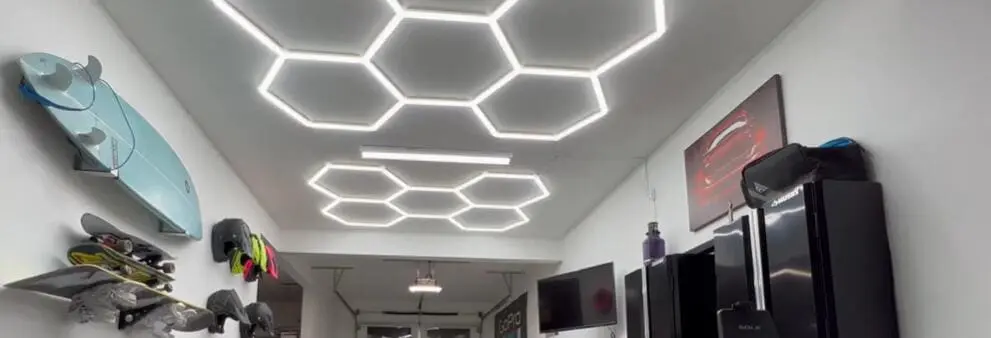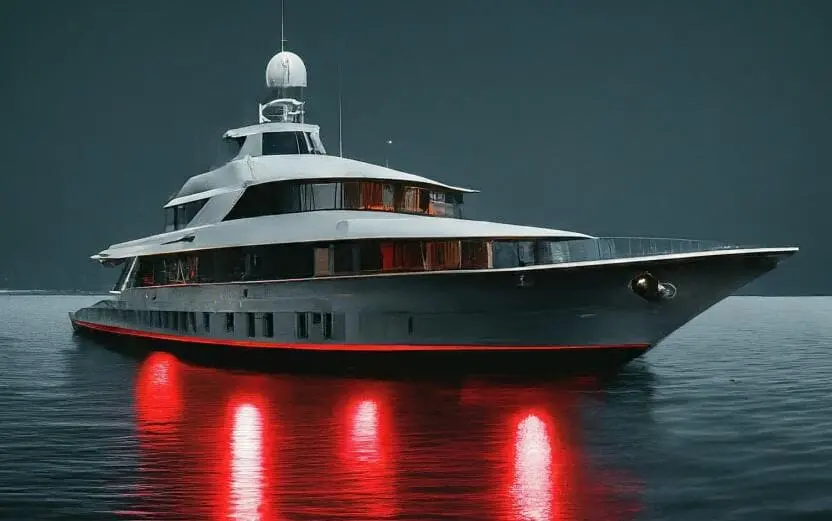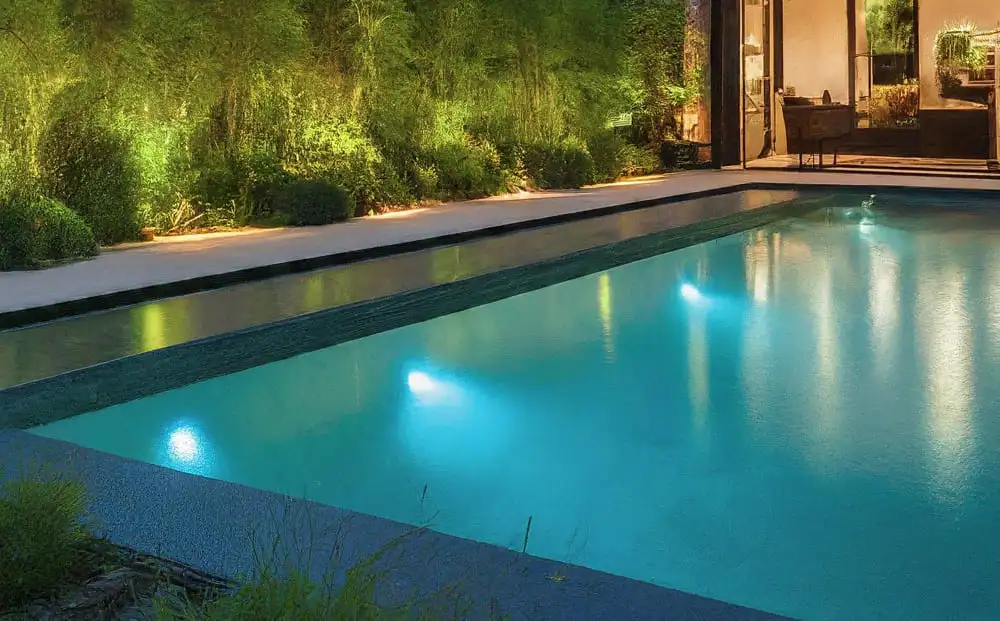Introducción
Imagine un almacén ajetreado: montacargas moviéndose, trabajadores realizando su trabajo y artículos siendo recogidos y empacados perfectamente. ¿Pero qué pasa si está demasiado oscuro? Se convierte en un lugar de ineficiencia, accidentes y fatiga visual.
La iluminación adecuada en un almacén es importante. Es como una guía silenciosa que ayuda a realizar el trabajo de forma segura, eficiente y asequible.
Esta guía le ayudará a comprender mejor la iluminación del almacén. Nos sumergiremos en el tema y le ayudaremos a convertirse en un experto. Al final, sabrá cómo elegir el mejor sistema de iluminación para su almacén. De esta manera, será un lugar luminoso y eficiente para todos.
Comprender las necesidades de iluminación del almacén
Olvídate de las bombillas incandescentes viejas y tenues. Hoy en día, los LED son los mejores para iluminar almacenes. Ahorran energía, duran más y emiten una luz brillante, perfecta para áreas grandes como almacenes.
Pero no elijas LED sin pensar. Para aprovecharlos al máximo, considere las necesidades de iluminación específicas de su almacén. Considere el tamaño del espacio, qué actividades se realizan allí, el ambiente deseado y las normas de seguridad. Luego podrá crear una solución de iluminación que utilice los puntos fuertes de los LED y satisfaga las necesidades únicas de su almacén.
Aquí hay dos factores clave que influirán en sus elecciones de iluminación:
¿Qué tipo de actividad se realiza en su almacén?
Comprender el tipo de actividad que se lleva a cabo en su almacén es crucial para determinar los requisitos de iluminación adecuados. Si su almacén implica una operación de recolección y embalaje de ritmo rápido, una alta visibilidad es esencial. Por otro lado, si sirve principalmente como almacén, la luz ambiental general puede ser suficiente. Identifique sus actividades principales para decidir cuánta luz necesita y qué tipo de luminarias utilizar para sus necesidades.
Requisitos de iluminación del almacén
Requisitos de iluminación del almacén: un desglose (seguridad, eficiencia, & ¡Más!)
• Seguridad: Una iluminación adecuada es importante para garantizar un entorno de trabajo seguro en los almacenes. Los caminos, áreas de almacenamiento y estaciones de trabajo adecuadamente iluminados reducen el riesgo de accidentes y lesiones.
• Eficiencia: Las soluciones de iluminación eficiente ayudan a optimizar las operaciones del almacén al mejorar la visibilidad, reducir el consumo de energía y mejorar la productividad general.
• Iluminación para tareas específicas: Las tareas en diferentes áreas del almacén necesitan diferentes niveles de iluminación. Las soluciones de iluminación para tareas específicas adaptadas a cada área pueden mejorar la eficiencia y la comodidad de los empleados.
• Cumplimiento normativo: Las normas de seguridad desempeñan un papel crucial en la iluminación del almacén. OSHA (Administración de Salud y Seguridad Ocupacional) describe niveles mínimos de pies-candela (Fc) específicos para diferentes áreas de un almacén. Garantizar el cumplimiento de estas normas no sólo es esencial para la seguridad de los trabajadores sino que también evita posibles sanciones.
Al considerar estos factores clave y profundizar en el mundo de los cálculos de iluminación y el diseño de distribución, transformaremos su almacén de un laberinto con poca luz a un faro de eficiencia y productividad. ¡Estén atentos mientras exploramos juntos el fascinante mundo de la iluminación de almacenes!
Calcular la iluminación del almacén
Ahora que hemos cubierto los conceptos básicos para elegir la luz adecuada para su almacén, profundicemos en los detalles: determinar la cantidad correcta de luz. Hablaremos sobre lúmenes y potencia, y también responderemos la pregunta común: “¿Cuántos lúmenes necesitas para tu almacén?”
¿Cuántos FC se necesitan para diferentes tipos de espacios de almacén?
Descubra cuánta luz necesita su almacén. Medimos esto en lúmenes o pies-candelas. A continuación se indica cuántas candelas-pie (fc) necesitan los diferentes tipos de espacios de almacén:
| Área en almacén | Required Light Level (in Foot-Candles) |
| General Storage | 30-50 fc |
| Picking and Packing | 50-75 fc |
| Loading Areas | 50-75 fc |
| Assembly Spots | 75-100 fc |
| Office Spaces | 50-75 fc |
| Shelves and Aisles | 50-75 fc |
| Stairs and Lifts | 5-10 fc |
| Washrooms | 20-50 fc |
| Areas Storing Dangerous Items | 50-75 fc |
Understanding Lumens: A Simple Guide to Brightness
It used to be common to measure the brightness of warehouse lights in wattage. But now, we use lumens. Lumens tell us how much visible light a light source gives off. You can think of lumens as the power of your lighting system—the more lumens, the brighter the light.
However, not all LED lights with the same wattage give off the same amount of lumens. Newer lights can give off more light while using less energy. This is called lumens per watt efficiency. So, if you only look at wattage when choosing warehouse lights, you might end up with a workspace that isn’t bright enough.
Now, let’s answer the big question:
How Many Lumens Do You Need for Your Warehouse?
Unfortunately, there’s no one-size-fits-all answer. The ideal number of lumens for your warehouse depends on several factors, including:
• Warehouse Height: Light spreads and gets dimmer over distance. Higher ceilings necessitate more lumens to achieve the desired light level at floor level.
• Activities Performed: What you do in your warehouse affects how bright the light needs to be. If you’re doing tasks like picking inventory or quality checking, you’ll need a brighter light.
• Warehouse Layout & Aisle Width: The design of your warehouse, including the width of aisles and the arrangement of shelves, also impacts how much light you need. If you have narrow aisles or lots of storage areas, you might need more focused lighting.
Appropriate lumens at Various Heights of LED warehouse lighting
We often get questions about the best lumens for warehouses of different heights. While we always recommend a personalized lighting plan, here are some general suggestions for achieving optimal brightness without excessive illumination.
| Height (ft) | Suggest Lumens |
|---|---|
| 12-15 | 10,000-18,000 |
| 15-20 | 16,000-24,000 |
| 25-35 | 38,000 |
| 25-25 | 35,000 |
Warehouse Light Layout Design
A good warehouse lighting plan takes into account factors such as:
• Spacing: The distance between fixtures plays a crucial role. Spacing too close can create glare, while too far apart leaves areas under-lit. Understanding the beam angle (the spread of light) of your chosen fixtures is essential for optimal spacing.
• Uniformity: The goal is to create a consistent level of light throughout the entire warehouse. This minimizes shadows and ensures workers have clear visibility in all areas, reducing accidents and improving efficiency.
• Crossover Lighting: Crossover lighting involves positioning fixtures in rows so that the light beams overlap slightly. This eliminates dark spots and ensures uniform illumination, even in wide aisles.
• Natural Light Integration: If your warehouse has windows, consider their placement when designing your layout. Maximize the use of natural light during the day by positioning fixtures strategically to supplement natural illumination.
Choosing the Perfect Warehouse Lighting Fixtures
Types of LED Warehouse Light Fixtures
Here are some popular warehouse lighting fixtures and their ideal applications:
1. High-Bay LED Lights: Ideal for warehouses with high ceilings, high-bay LED lights deliver powerful illumination over large areas. These fixtures are designed to provide uniform light distribution and can be mounted at heights of 20 feet or more, making them perfect for warehouses, distribution centers, and manufacturing facilities.
2. Low-Bay LED Lights: Suitable for warehouses with lower ceiling heights, low-bay LED lights offer efficient lighting solutions for areas with clearance heights ranging from 12 to 20 feet. These lights make sure aisles, storage areas, and workstations are well-lit for clear sight and safety.
3. Linear LED Fixtures: Linear LED fixtures are versatile lighting solutions that can be mounted flush to the ceiling or suspended from overhead structures. These fixtures are commonly used to provide task lighting in specific areas of the warehouse, such as packing stations, assembly lines, or inspection areas.
4. Wall Packs & Flood Lights: These powerful fixtures are ideal for illuminating exterior areas like building perimeters, loading docks, and security zones. They offer a wide beam angle and high lumen output for enhanced security and visibility.
Mounting Options for LED Warehouse Lights
In addition to selecting the right type of LED warehouse lights, choosing the appropriate mounting option is equally important for achieving best illumination and efficiency.
1. Ceiling Mount: Ceiling-mounted LED fixtures are ideal for warehouses with ample overhead clearance. These fixtures are directly attached to the ceiling surface, providing uniform illumination across the entire workspace.
2. Pendant Mount: Pendant-mounted LED fixtures are suspended from overhead structures using chains, cables, or rods. This mounting option allows for adjustable height and direction of light, making it suitable for areas where precise lighting control is required.
3. Wall Mount: Wall-mounted LED fixtures are installed directly onto vertical surfaces, providing focused illumination in specific areas of the warehouse, such as loading docks, entryways, or corridors.
Choosing the right LED lights for your warehouse can make your workspace brighter and safer. It also helps you work better and faster. Whether you need large lights for big storage areas or smaller lights for specific tasks, there’s a suitable option for you.
Key Considerations for Effective Warehouse Lighting
1. Wattage:
-
- Choose the right wattage based on your needs.
- Aim for 50-75 watts per 1000 square feet of floor space.
2. Color Temperature:
-
- Consider the color temperature that works best for your warehouse:
- Cooler color temperatures (5000K-6500K) are ideal for task lighting.
- Warmer color temperatures (3000K-4000K) are suitable for ambient lighting.
- Consider the color temperature that works best for your warehouse:
3. Mounting Height:
-
- Select lights appropriate for your mounting height.
- High bay lights are typically mounted between 20 and 40 feet high.
4. Type of Mounting:
- Choose between surface-mounted and suspended high bay lights based on your warehouse layout.
5. Energy Efficiency:
-
-
- Prioritize energy-efficient high bay lights to reduce consumption and costs.
- Look for high efficacy (lumens per watt) ratings.
-
6. Durability:
-
- Ensure the chosen high bay lights are durable and built to withstand warehouse conditions.
- Look for lights designed to resist dust, vibration, and other environmental factors.
7. Integration with Lighting Controls
Make the lights work with the control systems so we can manage and automate them from one place. This lets us easily adjust how bright the lights are in the whole warehouse.
Conclusion
This guide helped you understand warehouse activities, calculate lumens, choose the right LED fixtures, and improve efficiency. Using these tips, your warehouse will not only be well-lit, but your team will also be more productive and safe. Start now and reach out to us for a free consultation to create the best lighting for your specific warehouse!
Frequently Asked Questions
Q: What’s the best kind of lights for a warehouse?
A: The type of lighting that is best for a warehouse depends on various factors, including the warehouse layout and specific lighting requirements. commonly used lighting types are High Bay Lights /Low Bay Lights/Linear light, etc
Q: How do you calculate lighting for a warehouse?
A: To calculate lighting for a warehouse, you need to consider the square footage of the space and the activities taking place. Determine the recommended lumens per square foot based on the type of operation (e.g., picking and packing or storage). Multiply the square footage by the recommended lumens per square foot to get the total lumens required for the warehouse.
Q: How many lumens do you need for a warehouse?
A: The number of lumens needed for a warehouse depends on the specific requirements and activities. As a general guideline, warehouses typically require around 20-50 lumens per square foot. However, this can vary based on factors such as task complexity, ceiling height, and safety regulations.
Q: What are the lighting requirements for a warehouse?
A: The lighting requirements for a warehouse include:
- Sufficient brightness to ensure safety and productivity
- Uniform lighting distribution to minimize shadows and glare
- Adequate color rendering to accurately identify objects and labels
- Energy efficiency to reduce operating costs
- Compliance with safety regulations and standards



